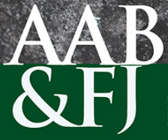Abstract
The Court is often confused when duelling valuation experts present apparently different evidence. Without a recognised theory, valuation evidence can appear disorderly and potentially contradictory. This is particularly evident in the more complex valuation task of business valuation as often presented to the Court by specialist accountants.
In the absence of holistic theoretical direction, The Family Court of Australia has attempted to clarify the valuation objective for its purposes, articulating the value to the owner concept. This concept is not exclusive to one legal jurisdiction, however, its application to family law matters continues to cause debate amongst practitioners with regard to its appropriate objective. Born out of minority shareholder issues, this paper reflects on the gestation of value to the owner through reviewing the Court’s guidance. It is noted, that there is some tension with this objective when applied to professional services businesses. It is important to resolve the tension properly in order for the court to balance its decisions with respect to the distribution of marital assets and provision for the future needs of family members.
This paper explores a particular application of value to the owner in professional services businesses where the distinction between personal and enterprise goodwill can be at issue. The importance of this distinction is in the consideration of capitalisation of future income as property or future income as enabling financial capacity, but not both. This distinction has implications in Court decisions that apply section 79 and/or section 75(2) of the Family Law Act 1975 (Cth), such that, duplication is avoided. Further implications flow to a broad range of valuation assignments where enterprise and personal goodwill components demand separate attention.
Keywords: Value to Owner, Valuation, Goodwill, Forensic accounting.
How to Cite:
Fargher, I., (2018) “The ‘Value to the Owner’ Objective and its Implications in the Separate Recognition of Personal and Enterprise Goodwill”, Australasian Accounting, Business and Finance Journal 12(3), 87-106. doi: https://doi.org/10.14453/aabfj.v12i3.6
Downloads:
Download PDF
481 Views
2091 Downloads

